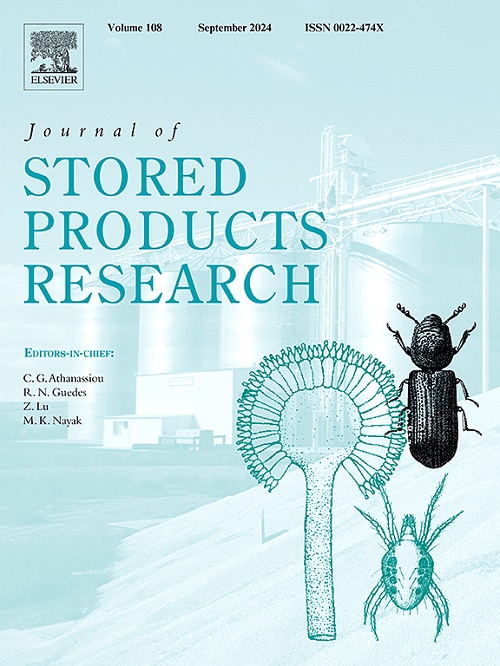Sustainable postharvest processing technologies for dried food commodities and firm-level adoption: A critical review
IF 2.7
2区 农林科学
Q1 ENTOMOLOGY
引用次数: 0
Abstract
Numerous studies have considered various food production technologies and their adoption factors for enhanced agricultural productivity. However, further research is needed to understand the factors influencing firm-level adoption of emerging technologies for sustainable post-harvest management: pest disinfestation, drying, and microbial inactivation, especially in the dried food industry. The current study focuses on the processing stage as it is characterized by significant post-harvest loss and, thus, has challenges and opportunities different from the production stage. A systematic review of extant literature using the Preferred Reporting Items for Systematic Reviews and Meta-Analyses (PRISMA) method reveals that four emerging thermal and six nonthermal technologies facilitate different sustainability dimensions, such as economic, social, and environmental. Regarding adoption factors, three groups have emerged as influential at the firm level per the Technology-Organization-Environment (TOE) framework: technology, firm characteristics, and the firm's external environment. The study also finds that relative advantage and investment cost are the most important technology-related factors. At the organizational level, top management support and firm size are the most important factors. Consumers, competitors and suppliers, and government regulations influence adoption in the external environment. Based on the findings, the paper suggests policy and future research areas for improving technology adoption to ensure sustainable practices.
干食品商品的可持续采后加工技术和公司层面的采用:一个关键的审查
许多研究考虑了各种粮食生产技术及其采用因素,以提高农业生产力。然而,需要进一步的研究来了解影响企业采用新兴技术进行可持续收获后管理的因素:害虫杀灭、干燥和微生物灭活,特别是在干燥食品行业。目前的研究主要集中在加工阶段,因为它的特点是收获后损失很大,因此面临着不同于生产阶段的挑战和机遇。利用系统评价和荟萃分析的首选报告项目(PRISMA)方法对现有文献进行了系统回顾,发现四种新兴的热技术和六种非热技术促进了不同的可持续性维度,如经济、社会和环境。关于采用因素,根据技术-组织-环境(TOE)框架,有三个群体在企业层面上具有影响力:技术、企业特征和企业外部环境。研究还发现,相对优势和投资成本是最重要的技术相关因素。在组织层面,最高管理层的支持和公司规模是最重要的因素。消费者、竞争对手和供应商以及政府法规在外部环境中影响采用。在此基础上,本文提出了改进技术采用以确保可持续实践的政策和未来研究领域。
本文章由计算机程序翻译,如有差异,请以英文原文为准。
求助全文
约1分钟内获得全文
求助全文
来源期刊
CiteScore
5.70
自引率
18.50%
发文量
112
审稿时长
45 days
期刊介绍:
The Journal of Stored Products Research provides an international medium for the publication of both reviews and original results from laboratory and field studies on the preservation and safety of stored products, notably food stocks, covering storage-related problems from the producer through the supply chain to the consumer. Stored products are characterised by having relatively low moisture content and include raw and semi-processed foods, animal feedstuffs, and a range of other durable items, including materials such as clothing or museum artefacts.

 求助内容:
求助内容: 应助结果提醒方式:
应助结果提醒方式:


